How to get to Lake Como?
This is the million-dollar question that crosses the minds of thousands of people planning to visit what easily amounts to the world’s most famous lake during their Italian holidays.
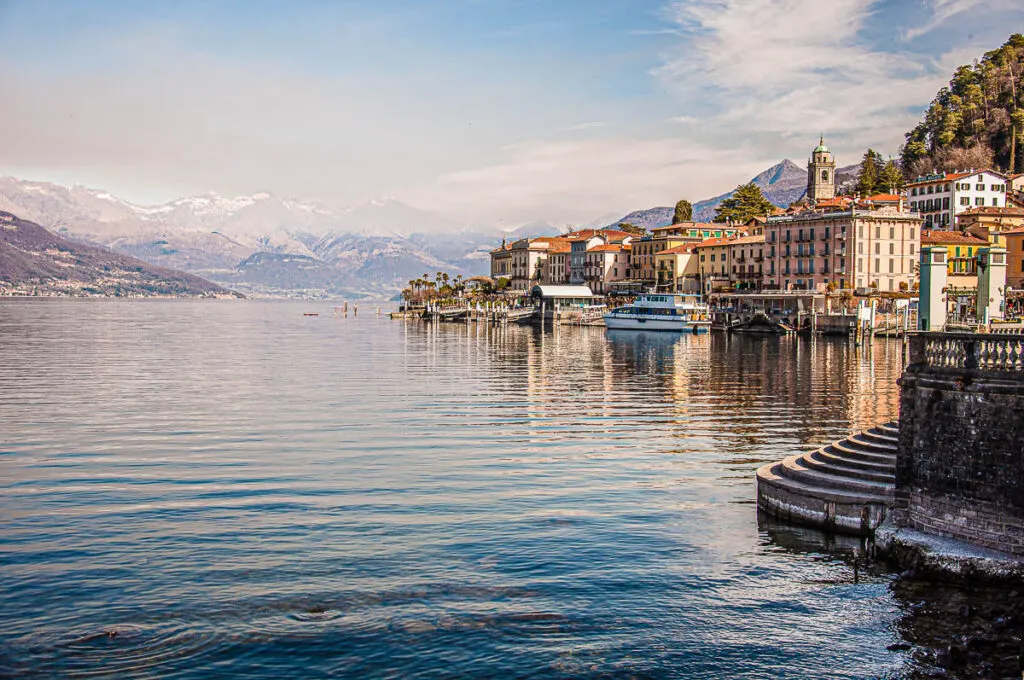
Shaped as an upturned letter Y and surrounded by vertiginous mountains, Lago di Como – as it’s known in Italian – looks very much like a landlocked fjord. It has a circumference of 171 km and the road that connects the dozens of towns and villages on its shores curves and turns – often at almost vertical to the water heights – with rarely a straight line in sight.
About 50 km or so away from Italy’s second-largest city – Milan – Lake Como is easy to get to and get around. Yet, to make the most of your time at the lake, there are many travel details that it’s best to know in advance. Especially, considering how popular the lake is and how many people from all over the world flock to it during the high season.
Fear not! In this blog post today, I will share with you nine ways to explore Lake Como, its prettiest towns, and its most stunning sights. In easy-to-browse-through chunks of information, I will lay out how to get to and around Italy’s Lake Como and make the most of it. Even if you are visiting just for the day!

You can choose to visit Lake Como by car, train, ferry, and even by seaplane! Or a combination of some or all of these modes of transport. Alternatively, you can also explore it on foot. It’s all covered below, so just scroll down and have a look at the options that fit your travel style the best.
It’s all padded with many practical tips about the lake. Plus, at the end of this blog post, you will also find a detailed section about how much time to spend here, what to expect in terms of weather, and where to stay depending on your budget. It’s all based on my first-hand experiences of visiting Lago di Como several times over the last five years and it’s designed to make your travel planning as smooth and easy as possible.

For even more information about Lake Como, have a look also at these blog posts:
- Best Things to Do in Lake Como
- Best Towns on Lake Como
- Lake Como in Winter – 10 Reasons to Visit
- The Beauty of Lake Como
- 3 Best Airports for Lake Como
Otherwise, let’s start!
Where is Lake Como – Italy’s Most Famous Lake
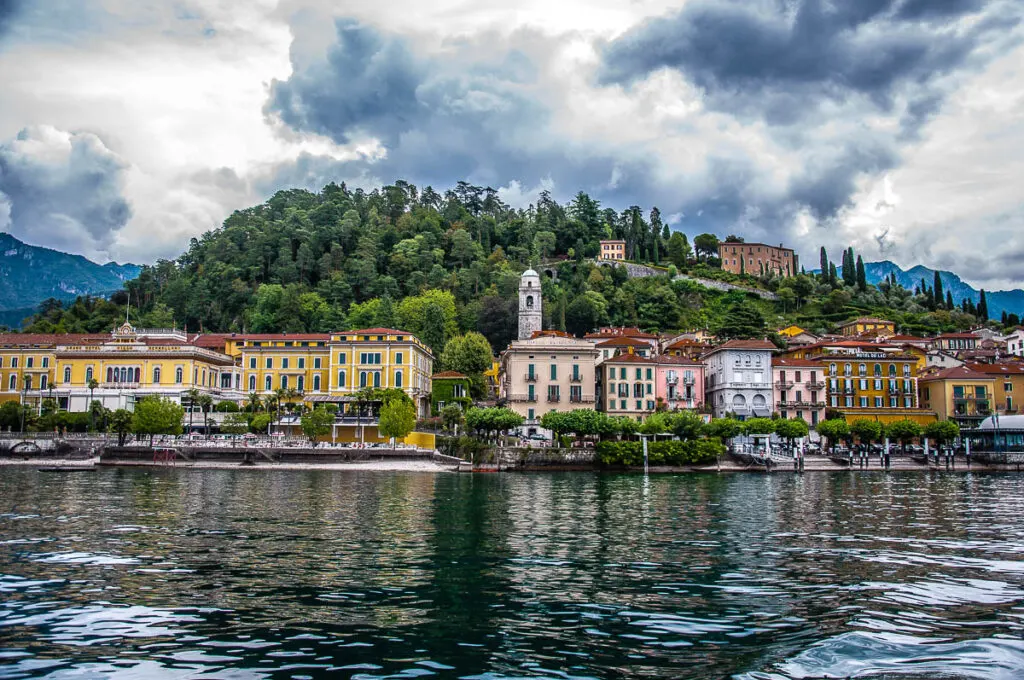
First things first! Let’s pinpoint on the map where exactly Lake Como is in Italy and Europe.
Known as a hotspot for famous people, Lago di Como is in Northern Italy. Part of the Northern Italian region of Lombardy, it often is affectionately called Il Uomo – or The Man – by the locals. The lake’s outline does in fact look a bit like a man taking a large step. One of his feet rests on the town of Lecco and the other – on the town of Como.
Lake Como has three thin branches which meet at Punta Spartivento. This beautiful promontory is next door to the town of Bellagio and opens sprawling views over the lake.
The three branches are named after their main lakefront towns. As such, the northern branch of Lake Como is known as Colico, the eastern as Lecco, and the western one as Como.
The mountainous area locked between the Lecco and the Como branches of the lake is called the Triangolo Lariano – the Larian Triangle (from Lake Como’s ancient name – Lario). Punta Spartivento is right at the tip of this natural triangle.
Here is a map showing the exact location of Lake Como in Italy. You can zoom in and out and use it to calculate directions from anywhere in Italy and abroad.
I have pinned both the city of Milan and the following lakefront towns to the map: Como, Lecco, Colico, Bellagio, and Varenna. The first three, as already mentioned, are the largest towns here. The other two are the most popular destinations for day trips and tourist visits.
How to Get to Lake Como and 9 Best Ways to Travel Around Italy’s Most Famous Lake
Pin for Later!
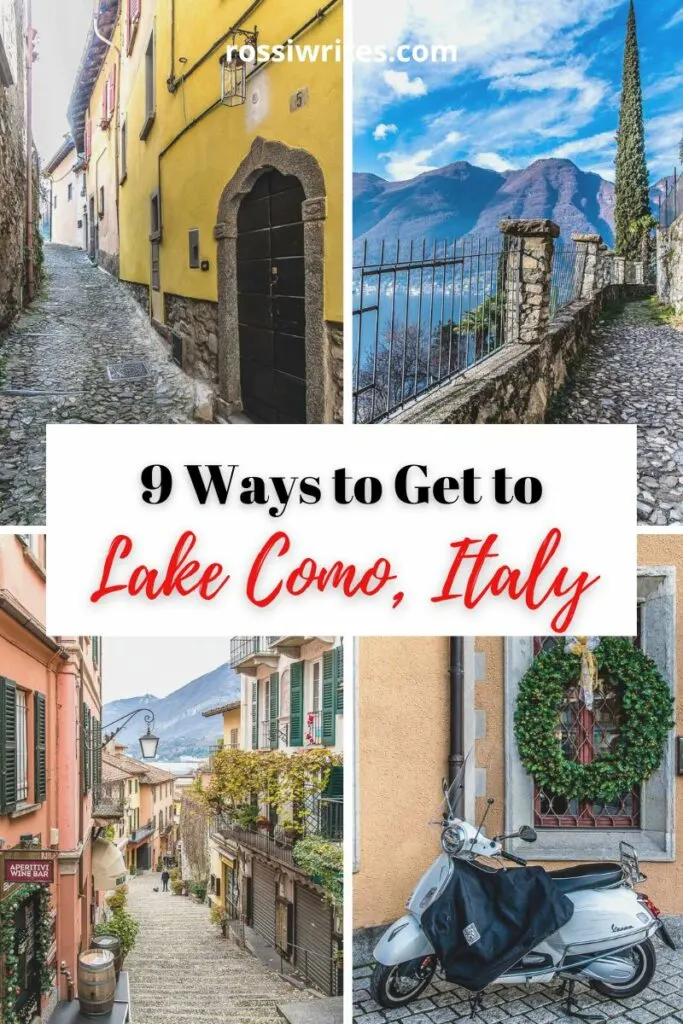

1. Explore Lake Como by Car
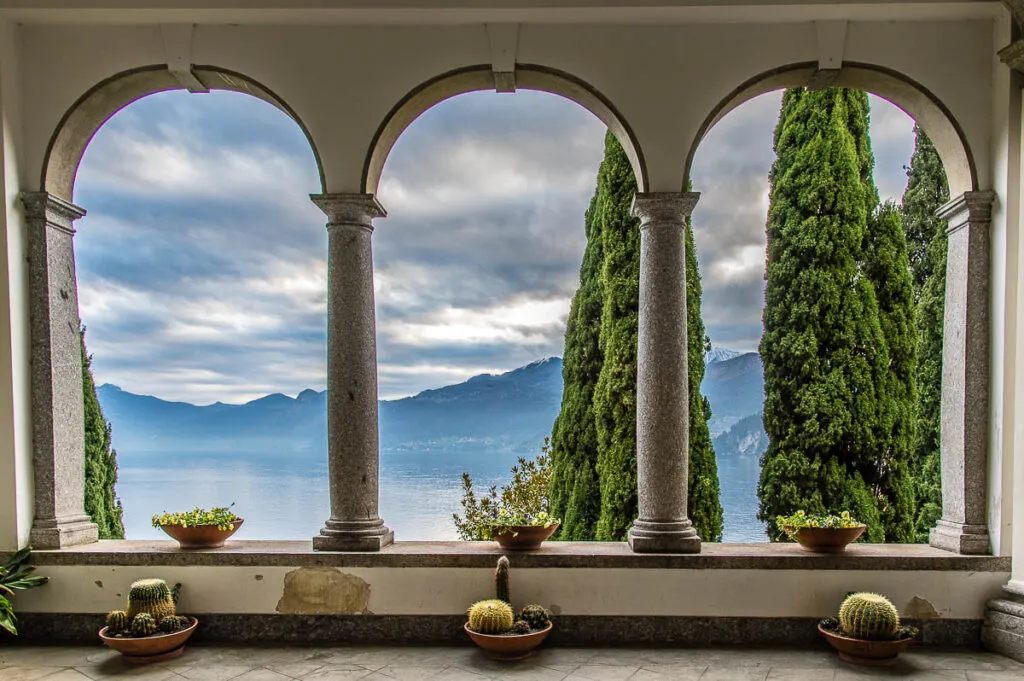
Having a car at your disposal is the most convenient and yet the most taxing way to explore everything that Lake Como has to offer.
On the plus side, being able to drive around the lake gives you the immense freedom to visit a myriad of picturesque towns, medieval villages, historic villas, botanical gardens, small beaches, must-see museums, and so many other wonderful places on the shores of Italy’s most famous lake. Not to mention all the hidden gems and secret corners you will be able to reach and explore.
At the same time, however, driving around the lake can be incredibly stressful. Here is why!
First, Lake Como is connected to Milan by Autostrada A9. This is the oldest motorway in Italy and the world. It’s also known as the Autostrada dei Laghi (Motorway of the Lakes) and it was built in 1924. It’s a toll road. The outskirts of Milan are very industrial and the rush hour seems to be never-ending. Thankfully, this usually is a short and fast drive. Not so much on summer weekends when it seems, half of Milan decamps to the lake.
Once you reach the lake, there is a lakeside road which skirts the whole outline of Lago di Como providing stunning panoramic views and breathtaking viewpoints. If you are the driver, however, keep your eyes on the road at all times as it is incredibly sinuous and often very narrow. There are also sharp corners, old houses angling onto the lane, and many blind spots.
The road runs through many of the lakefront towns and villages. Several of them have limited or no pavements at all. Expect to see locals and visitors strolling down the road as cars and buses pass by them. On occasion, people also go jogging along the road, so as a driver you need to be alert at all times.
Some of the local drivers – very used to the roads – drive in a very assertive manner. As such, they may encroach into the opposite lane and even try to pressure you to drive faster than you are comfortable with. If you can, don’t be too proud to let them pass and maintain a sensible speed at all times.
On the plus side, however, the eastern shore of the Lecco and the Colico branches of the lake is very easy to explore by car as it’s served by the Italian highway SS36. This fast road runs through a series of tunnels. From Lecco, it takes just half an hour to reach Colico (at the upper northeastern shore of Lake Como). Travel times from Lecco to Varenna and Bellano, for example, are only about 20-22 mins depending on the time of the day. Just make sure that you keep an eye out for the right exit. If you miss it (as it happened to us once), you will need to follow the highway for quite some time before you can turn back.
When you explore Lake Como by car, the biggest issue you will face is finding parking. In the larger lakefront towns like Lecco and Como, there are multistorey car parks. The smaller towns here though often have very few parking spaces the majority of which are reserved for the locals. The problem is only exacerbated during the high season when thousands of people travel to Lake Como on a day trip or for a longer holiday.
Here are a few practical tips if you decide to get around the lake by car:
- Rent a small car. Space on the road around Lake Como is limited. A small vehicle will make things so much easier.
- Be courteous to other drivers. Some portions of the road are so narrow and bendy that you may need to stop to let the oncoming traffic pass first.
- Be mindful of pedestrians (and joggers). Often, there are simply no pavements for them to use.
- If you are staying at a local accommodation, ask if it provides parking spaces (ideally, for free). If not, it may be difficult to find a nearby place to leave your car at.
- Never park in a reserved parking space (usually held by the locals). Towing is active 24/7 and they are strict about it.
- Parking can be pricey around Lake Como, so budget accordingly.
- If you are visiting just for the day, consider parking in a multistorey car park in one of the main lakefront towns and then use the ferries or the local buses to get around.
- If you see a sign with the letters ZTL on it, don’t drive beyond it. ZTL stands for Zona di Traffico Limitato in Italian or a zone with limited traffic. Such usually are the historic centres of centuries-old Italian towns and driving through one incurs a heavy fine. Bear in mind that if your accommodation is in the historic centre and provides parking spaces, it may give you a special temporary pass allowing you to drive through the ZTL. Ask in advance!
- The narrow windy roads here don’t really allow high and moderate speeds. Don’t be surprised if a short journey of 15 km takes over half an hour to do. The distance from Como to Bellagio, for example, is only 30 km or so. It usually takes just under an hour and even longer during the high season.
Having said all that, driving around Lake Como is still a very convenient way of exploring as much of the lake as possible. Especially the eastern shore of the Lecco and the Colico branches. So, do weigh the cons and pros very carefully in order to make the right decision for yourself and your travelling companions.
2. Reach Lake Como by Train
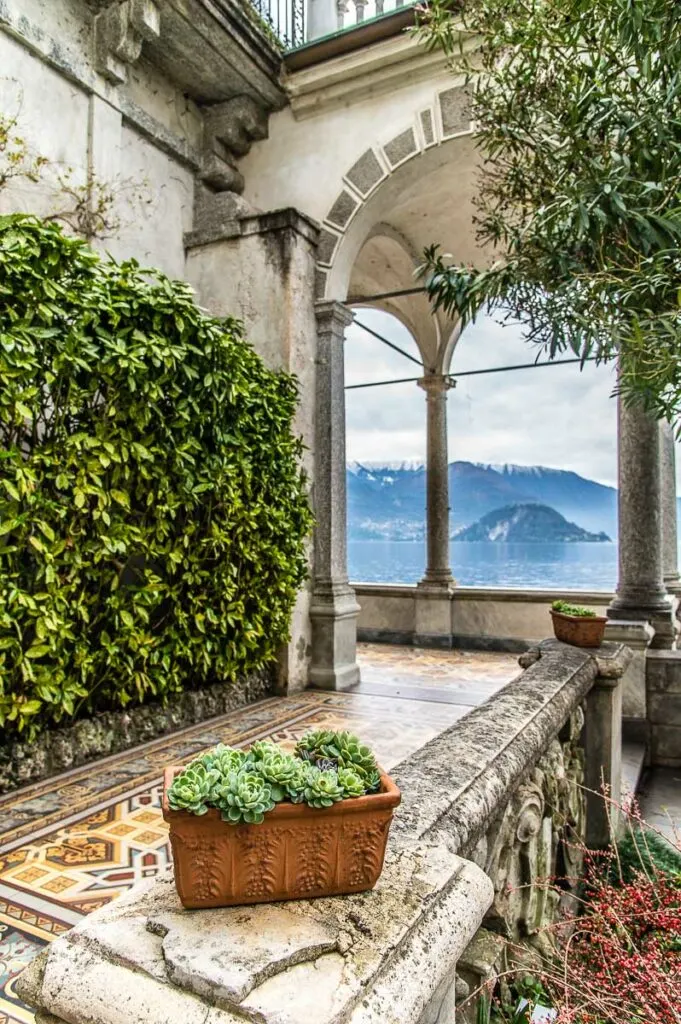
You can easily get to Lake Como by train from anywhere in Italy and abroad. Several of the lakefront towns have railway stations which makes them easy to reach and thus provide quick access to the lake from Milan and the nearest large international airports (see point 9 below).
It works like this:
On the Como branch of the lake, the town of Como is the only one linked by railway. It has three train stations:
- Como San Giovanni – the town’s main railway station is about a kilometre away from the Duomo and the lakefront promenade. If you are arriving from either Milano Centrale (Milan’s main railway station) or Milano Porta Garibaldi (a smaller railway station in Milan) get off here and either walk or take a local bus to the historic centre. The journey from Milano Centrale lasts around 40 mins with three intermediate stops. The journey from Milano Porta Garibaldi is between 50 mins and an hour with either a change in the city of Monza or 11 intermediate stops on the direct train.
- Como Camerlata – a small railway station serving the town’s southern suburbs. Arriving from Milan, it precedes Como San Giovanni.
- Como Nord Lago (also known as Como Lago) – a small, end-of-the-line railway station. It stands just off the lakefront promenade, next door to the majestic Duomo, and very close to the station of the Brunate funicular. Get off at this stop if you are arriving from Milano Cadorna (a small railway station in Milan) or from Malpensa Aeroporto T1 or T2 (the railway stations of Milan Malpensa Airport). The journey from Milano Cadorna lasts about an hour with 13 intermediate stops. The journey from Malpensa Aeroporto T1 or T2 is 1 h 20 mins with a change in the town of Saronno.
Once you’ve reached the town of Como, you can easily get to the other towns on the Como branch of the lake by local bus (see point 3 below) or ferry (see point 4 below).
Getting to the eastern shore of Lake Como by train is much easier. A railway line spans its whole length from the town of Lecco to the town of Colico and connects it to Milan’s main railway station – Milano Centrale. As such, you can easily reach the many lakefront towns here by train in around an hour on average. Here are some sample travel times:
- Milano Centrale to Lecco – 39 mins
- Milano Centrale to Mandello del Lario – 51 mins
- Milano Centrale to Varenna/Esino – 1 h 4 mins
- Milano Centrale to Bellano/Tartavalle Terme – 1 h 9 mins
- Milano Centrale to Colico – 1 h 26 mins
The direct train from Milano Centrale stops at all of the above destinations. Alternatively, you can change in Lecco and get on a slower regional train that stops at these plus several other towns dotted between them.
This makes the eastern shore of the lake a very convenient arrival point by train and ideal for day trips. Once in Lecco, for example, you can easily get the local bus to Bellagio – the main point of tourist interest at Lake Como. If you stay on the train until Varenna, then Bellagio and Menaggio are only a short hop by ferry across the lake. And if you continue to Colico, you can get a bus that will take you down to the town of Como via the northern tip and then the whole western shore of the lake.
To check train times and book train tickets in advance, I find the following three websites very useful: Omio, ItaloTreno, and TrenItalia.
Otherwise, see this handy map below showing the exact locations of the train stations you can use for Lago di Como. You can zoom in and out to get a better idea of their geographical positions on the shores of Italy’s most famous lake. If you click on the grey star next to the map’s name, this will add the map to your account in Google Maps. This way, you can consult it as and when you want.
Here are the locations pinned to the map:
Railway Stations in Milan: 1. Milano Centrale 2. Milano Porta Garibaldi 3. Milano Cadorna – with red pin
Railway Stations on Lake Como: 1. Como San Giovanni 2. Como (Nord) Lago 3. Lecco 4. Abbadia Lariana 5. Mandello del Lario 6. Olcio 7. Lierna 8. Fiumelatte 9. Varenna/Esino 10. Bellano/Tartavalle Terme 11. Dervio 12. Colico – with green pin
Other Nearby Railway Stations – 1. Malpensa Aeroporto T1 and T2 2. Saronno 3. Monza – with purple pin
3. Travel Around Lake Como by Bus
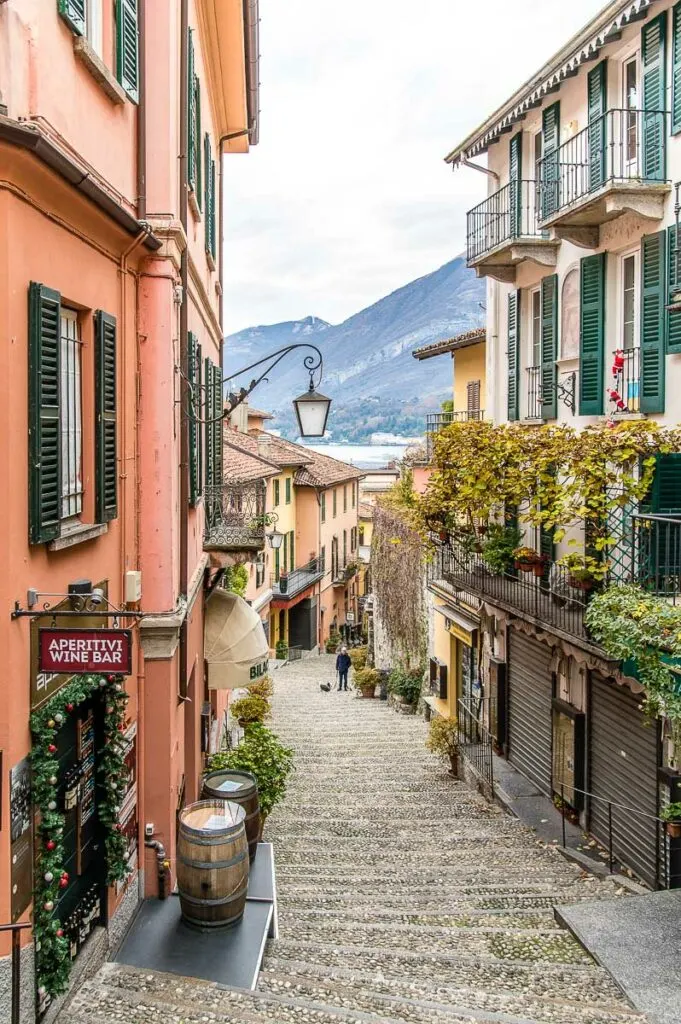
Taking the bus is a great way to travel around Lago di Como. The drivers skillfully navigate the sinuous road and you just need to sit back, relax, and take in the sprawling panoramas. The route will take you through several picturesque lakefront towns thus enticing you to be spontaneous and see even more places around Italy’s most famous lake.
Numerous bus lines connect the many destinations here and are operational all throughout the year. You can check the current timetables and prices for the different bus lines serving Lake Como on the website of ASF Autolinee (in Italian). You can buy a single or a return ticket to a particular destination as well as a one-day or multi-day ticket to travel around the lake. The current prices are published here. This handy map gives you a visual idea of the bus routes you can take.
In a nutshell, however, the main bus lines are:
- C10 – taking you from Como all the way up the western shore of the lake to the town of Menaggio and then along the northern end of the lake to the town of Colico. Catch it if you want to visit such iconic places as Villa del Balbaniello and Villa Carlotta and explore beautiful lakefront towns such as Cernobbio, Laglio, Menaggio, and Gravedona. The bus takes around 1 h 10 mins from Como to Menaggio and it covers the full itinerary in about 2 h 15 mins or so.
- C30 – taking you from Como along the eastern shore of the Como branch of the lake all the way up to Bellagio. The bus stops at all the small towns and villages that dot the shore here. Nesso is particularly well known on account of Orrido di Nesso – a powerful waterfall that rumbles in a steep gorge. The journey from start to end lasts around 1 h 10 mins.
- D10 – taking you from Lecco to Bellagio in about 45 mins or so. Once again, the bus stops at many lakefront towns and villages along the way and opens panoramic views over the much less visited western shore of the Lecco branch of Lake Como.
Exploring Lago di Como by bus is very convenient. However, during the high season, this type of transport can get very busy, especially during the weekends and rush hours. You may need to queue to get on the bus or even need to stand up during a portion of or the whole journey. Different people may react differently when the bus arrives. Some may be pushy trying to get on board first! Be polite but stand your ground.
Another thing to be aware of is that outside of Como and Lecco the bus stops are often right on the narrow and sinuous lakeside road with not much space for a shelter or even a spot to stand. Be mindful of the passing traffic. Hold children by the hand. When you get off the bus, check to see if there are cars waiting behind the bus before starting to cross the road.
4. Town-Hop Around Lake Como by Ferry
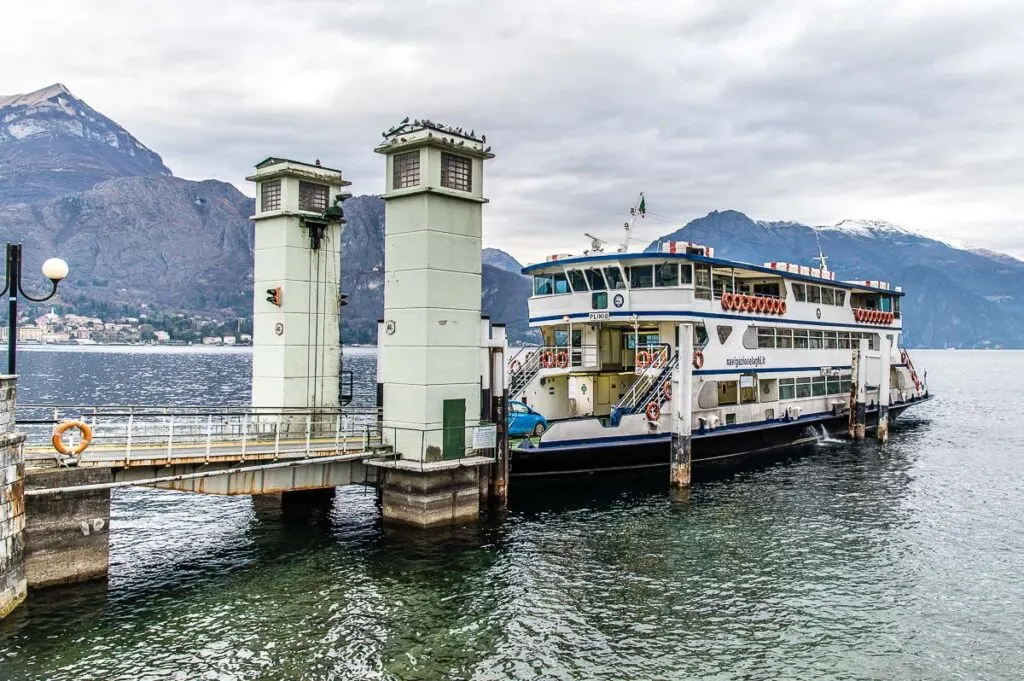
Crossing Lake Como on board a ferry is a great experience.
The beauty of the many lakefront towns and the lake’s vertiginous natural setting is best enjoyed from the water. Sitting on the deck, feeling the fresh air on your face, and taking in the sprawling panoramas is what travel memories are made of.
Elegant villas, lush gardens, centuries-old churches, and even a gorge with a rumbling waterfall glide past you offset by the dark waters of the lake and the tall mountains filling the horizon on all sides.
Plus, taking a ferry is an easy way to reach lakefront towns that are on opposite shores thus avoiding circumnavigating the lake by road and any potential traffic jams along the way. By all means, take the ferry at least once during your time at Lake Como. Here is how it works:
In a nutshell, here are the types of ferries operated by Navigazioni Laghi (the company which also runs the ferries on Italy’s largest lake – Lago di Garda):
- Regular pedestrian ferries connecting Como to Colico and stopping at many small and large lakefront towns on both sides of the Como and Colico branches of the lake along the way. This is a slow service (for example, the journey from Como to Bellagio lasts around 1 h 30 mins to 2 h), that takes hours from start to end but provides beautiful panoramic views along the way. In winter, the timetable of the regular ferries is heavily reduced.
- Fast pedestrian ferries connecting Como to Colico and stopping only at the most important lakefront towns on both sides of the Como and Colico branches of the lake along the way. This is a speedy service (for example, the journey from Como to Bellagio takes around 45 mins to 1 h), however, it costs more than the regular ferries.
- Car/Pedestrian ferries in the central part of Lake Como. They ferry both vehicles and pedestrians between the towns of Varenna, Bellagio, Menaggio, and Cadenabbia. The crossing from Bellagio to Menaggio, for example, lasts only 15 mins. The crossing from Varenna to Bellagio is also only a quarter of an hour. These ferries are very convenient, open beautiful panoramic views, and most importantly, you are not stuck on them for hours. During the high season, there is also a shuttle boat for pedestrians connecting Bellagio, Tremezzina, Varena, and Bellano. This is very convenient if you want to visit some of the most famous historic sights here, for example, Villa Carlotta and Villa Monastero. The waterfall of Orrido di Bellano is also a must-see.
- Pedestrian ferries connecting Lecco to Bellagio. These are usually operational only during the high season.
You can buy ferry tickets online in advance or on the day from the ticket kiosks at the ferry terminal in each town (which usually is right next to the town’s lakefront promenade). You can purchase a one-way or a return ticket to a specific destination. Alternatively, you can opt for a one-day or a multi-day pass which gives you a chance to hop on and off the ferry so as to visit the many different lakefront towns along the way.
For updated ferry times, prices, and tickets, always refer to the official website of Navigazione Laghi.
5. Explore Lake Como on Foot
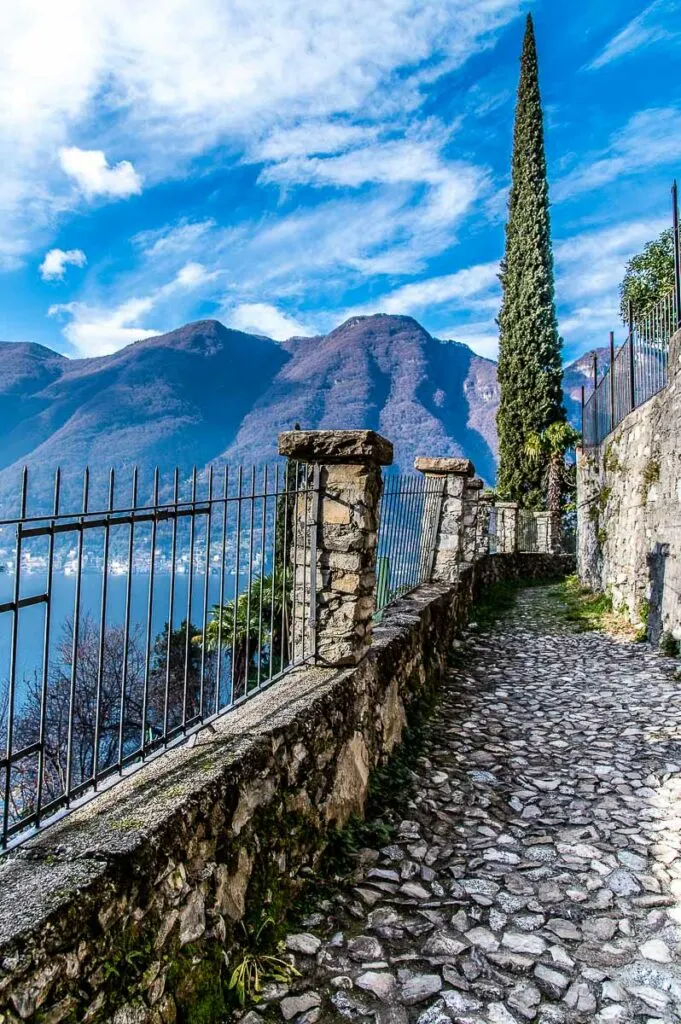
Often, your own two feet are all you need to explore Lake Como from the most advantageous viewpoints.
There is a large number of hiking paths all around Italy’s most famous lake. Not to mention the gorgeous promenades that stretch along the waterfront in many of the lakefront towns and open beautiful views over the lake and the mighty mountains that hold it in a tight embrace.
Just make sure that you wear your most comfortable shoes! If you decide to explore the trails around the lake, these need to be proper hiking boots with a good grip. Plus, many of the lakefront towns are built on steep cliffs and their centuries-old streets are often covered with jagged cobbles which are difficult to walk on in flip-flops or sandals. In many cases, the streets here are actually long and sinuous stairways with an endless number of irregular cobbled steps. The towns of Nesso, Varenna, and Bellagio have plenty of these. So, make sure that your feet and ankles are supported at all times.
There are, roughly speaking, three ways to get walking around Lake Como:
- Gentle walks around some of the flat lakefront towns – if you don’t enjoy uneven surfaces, the towns of Como, Lecco, Cernobbio, and Menaggio may be just what you need. With plenty of even ground here – both in their historic centres and along their promenades – you will still get to see some of the most beautiful corners of Lake Como without really having to go uphill. While Bellagio has some steeper streets, the walk to Punta Spartivento where the lake’s three branches meet follows a generally flat road. Another easy walk to do is in the hilltop town of Brunate where you can follow the road from the funicular station past many beautiful villas in the Art Nouveau style to a fantastic panoramic viewpoint over the Como branch of the lake.
- Exploratory walks around the steeper lakefront towns – often Lake Como’s towns are made of small frazioni – or hamlets in English – connected by centuries-old cobbled paths. Called mulattiere – or mule tracks in English – they go across steep slopes and open splendid panoramas. The town of Nesso is a case in point. Here you can walk from the ferry terminal to the town’s centuries-old hamlet of Borgovecchio along one such mulattiera.
- Hikes for all abilities – the hills and mountains around Lake Como are crisscrossed by numerous hiking paths. Some of them follow ancient Roman roads. Others take several days to complete. Among the most well-known hikes here are the Sentiero del Viandante and the Greenway del Lago di Como. Every town here, however, is the starting point for many short and long hikes. You can find information in the local tourist information offices where leaflets with maps and routes are usually available for visitors to the lake.
6. See Lake Como on Board a Sleek Motorboat
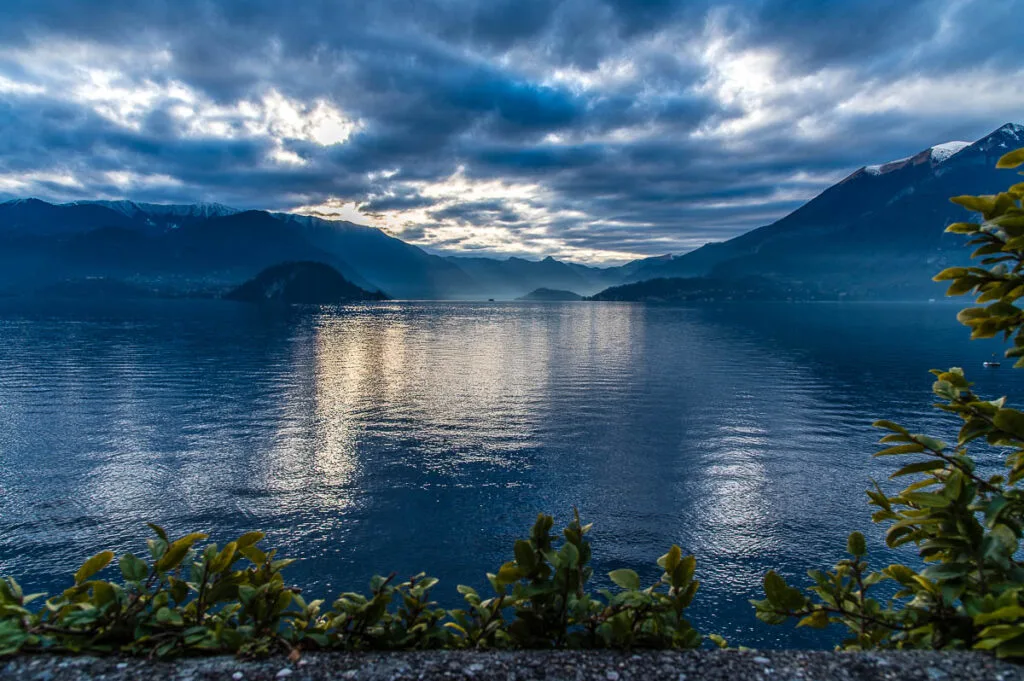
Crisscrossing Lago di Como on board a sleek motorboat is the poshest way to travel around Italy’s most famous lake.
There are many companies all around the lake that charter boats to visitors. You can ask for recommendations at your accommodation or simply head to the promenade to chat directly to the boat reps there. Alternatively, you can book a boat online in advance for two hours or four hours.
If you don’t have any experience with motorboats, you can hire a boat with a skipper to take you places and show you many hidden corners. Alternatively, you can choose to share the boat with other people for a cheaper yet fun experience.
A serious word of warning here, however! The lake water can get very cold very quickly. Especially, the further away from the shore you are. Lake Como is the deepest lake in Italy. Its waters drop to a depth of 410 m! The risk of drowning is real.
The boat chartering company should provide you with life jackets and advise you specifically where it’s considered safe to anchor and how close to the shore you can get.
During the high season, there is a high level of boat traffic in Lake Como. Many luxury boats here travel at full speed. You need to observe proper distances from other boats, yachts, and the shore at all times.
According to the Italian news agency ANSA, the water at certain points of Lake Como may be polluted. This article (in Italian) has more details or you can try to search for other sources of information, too.
7. Take a Taxi at Lake Como
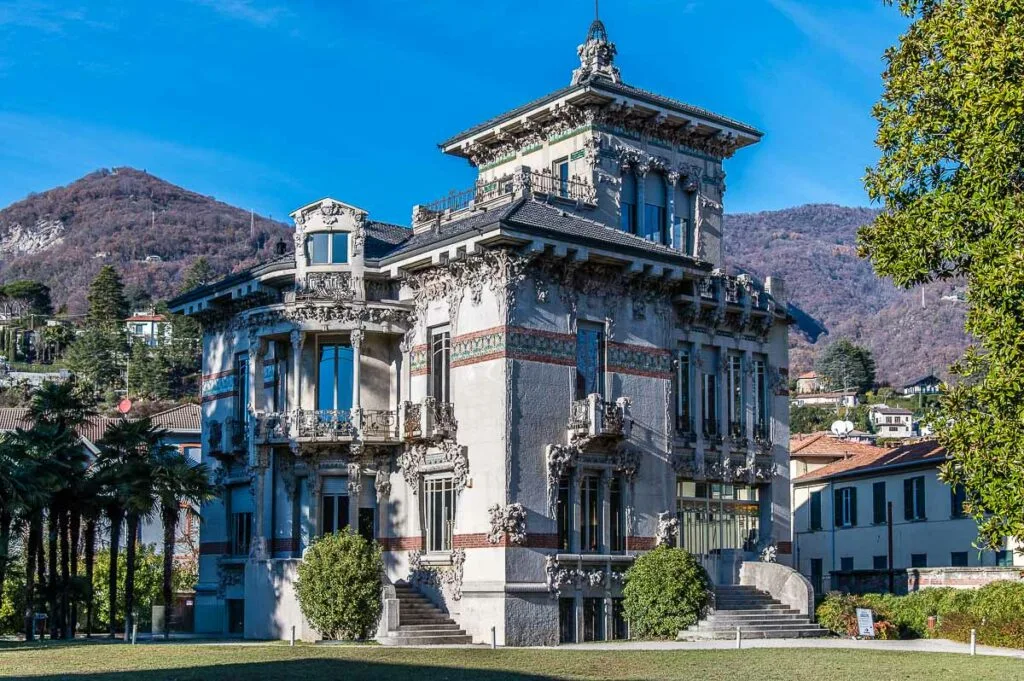
Taxis in Italy are white by law and while they may cost a pretty penny, they offer a convenient way to get around Lake Como and explore the many exciting sights on its shores. Especially, if you don’t want to bother with a rental car or with public transport. And, especially, if you don’t have much time to spend at the lake but you want to see as much as possible.
You can book a taxi even before your arrival as many taxi companies that serve Lake Como have websites in several languages. You just need to search for ‘taxi Lake Como’ or ‘taxi the name of the lakefront town you want to visit‘ and your favourite search engine will return dozens of results.
Otherwise, you can get a taxi at the train and bus stations in the larger lakefront towns. You can also ask your hotel to call you one or to recommend a local taxi company for you to use.
Ask the taxi driver in advance approximately how much it will cost you to reach your destination. Be prepared that on Sundays and public holidays, a surcharge may apply.
The main inconvenience of travelling by taxi here is the cost of the service. At the same time, getting a taxi here may be a necessity. Especially, if you need to reach a corner of Lake Como that is off the beaten track. Or if you need to return to your accommodation late at night when public transport is not running.
Taxi companies may also offer customised tours of Lake Como or of certain towns and sights around it. This gives you a chance to explore a branch or two of the lake in a day and to stop exactly where you want on its shores.
8. Book an Organised Tour to and Around Lake Como
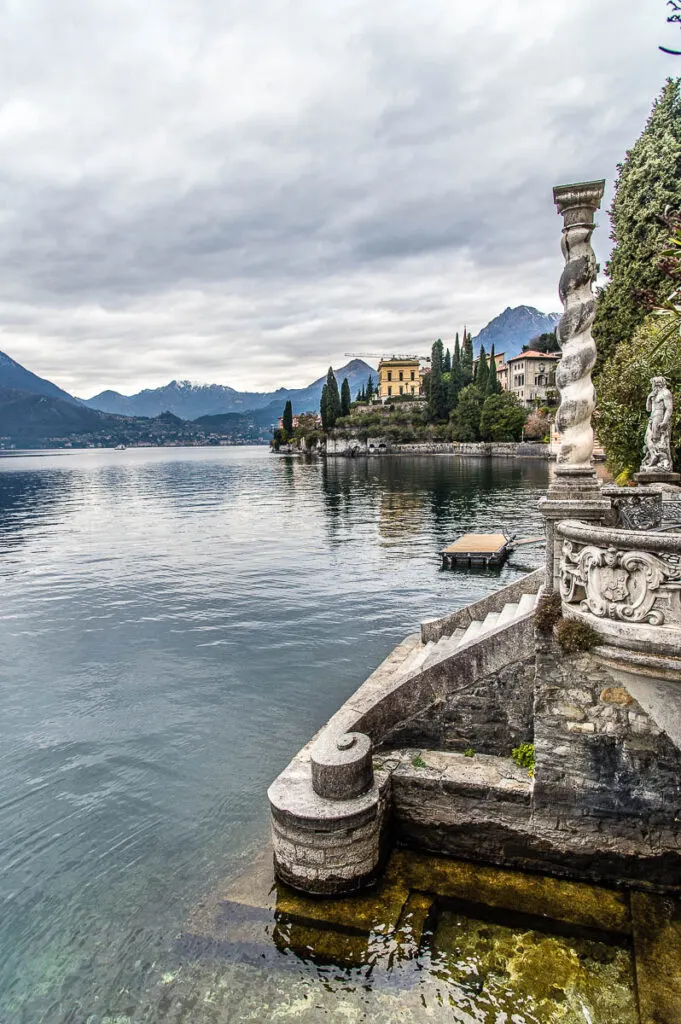
Finally, you can easily book a guided tour to take you to and around Italy’s most famous lake – Lago di Como. This option works well if you want to see the most and yet you don’t have much time to spend here. It is also the best option if you prefer to be shown all the best corners of the lake by an experienced tour guide instead of trying to do it all by yourself.
This guided day trip from Milan to Lake Como comes highly recommended. It takes you to several of the prettiest corners around the lake. It also combines travel by coach and boat for the best views and the maximum range of experiences.
You can also book a guided trip starting from the town of Como itself. This one packs a lot of activities in a day and takes you to the two most popular lakefront towns – Bellagio and Varenna.
While you can also do it all by yourself using the tips shared in this blog post and have a wonderful time, sometimes, it pays to be shown around. Especially, if it’s your first visit to Lake Como, if you have only a short amount of time or you find it overwhelming to find your way around in a country where you don’t speak the language.
9. Get to Lake Como by Plane and See Italy’s Most Famous Lake from Above
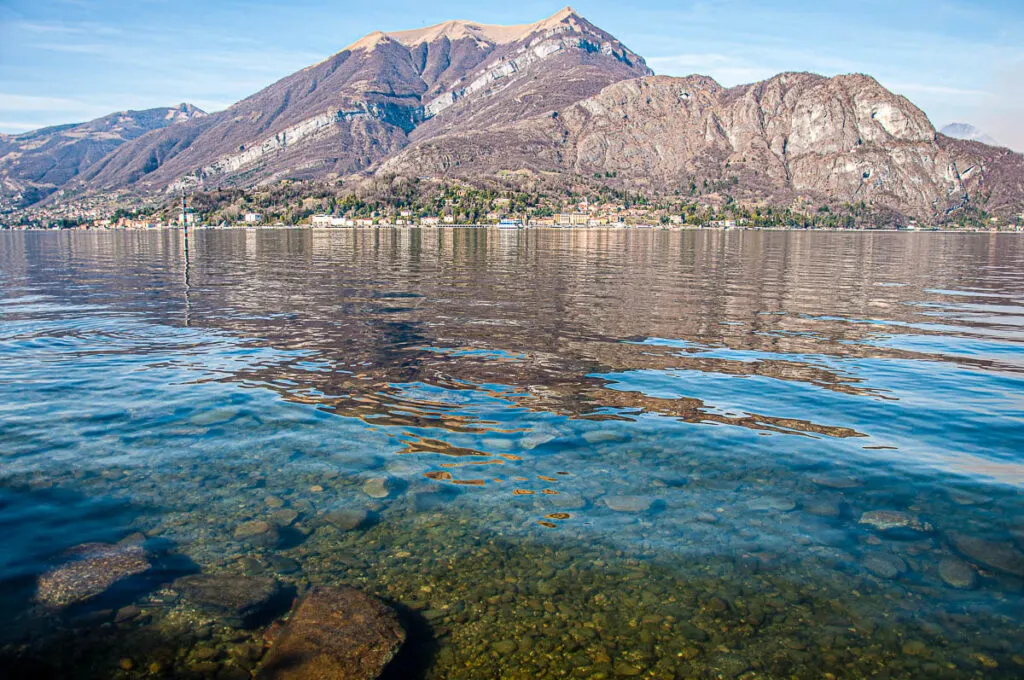
Finally, let’s talk about getting to Lake Como by air. The nearest to Lake Como large international airports are:
Milan Malpensa – more convenient for the Como branch of the lake. From the airport, you can get the Malpensa Express train to the small town of Saronno. Once there, take the train to Como Nord Lago – a small end-of-the-line railway station next to the town of Como’s lakefront promenade. Along the way, the train also stops at Como Camerlata and Como San Giovanni – two other railway stations serving the town of Como. Total travel time by train is around 1 h 20 mins.
Bergamo Orio al Serio – more convenient for the Lecco branch of the lake. From Bergamo Orio al Serio airport take the shuttle bus to Bergamo railway station. Once there, take the train to Lecco. Total travel time starts from just over an hour.
Milan Linate – convenient for both the Como and the Lecco branches of the lake. From Milan Linate airport get the Airport Bus Express to Milano Centrale railway station (25 mins travel time). Once there, you can continue by train to Como, Lecco or another lakefront town with a railway connection.
Alternatively, you can get bus line 73 from Milan Linate Airport to Milano Forlanini railway station. Once there, you can continue by train to Como, Lecco or another lakefront town with a railway connection. Travel times are longer than taking the train from Milano Centrale and you will need to change trains along the way in the city of Monza.
Plus, if you really want to have a one-of-a-kind travel experience at Lake Como, consider seeing it from above. All throughout the day, seaplanes crisscross the skies above Italy’s most famous lake.
Standing by the Volta Temple on the town of Como’s lakefront promenade, you will see them flying out of their hangar and gliding up. They are operated by Aeroclub Como – the oldest seaplane organisation in the world which also runs a flight school.
Learn More:
- 3 Best Airports for Lake Como, Italy (With Transfer Options, Travel Times, and Maps)
- 11 Major Airports in Northern Italy
Practical Tips About Visiting Lake Como in Italy
Pin for Later!
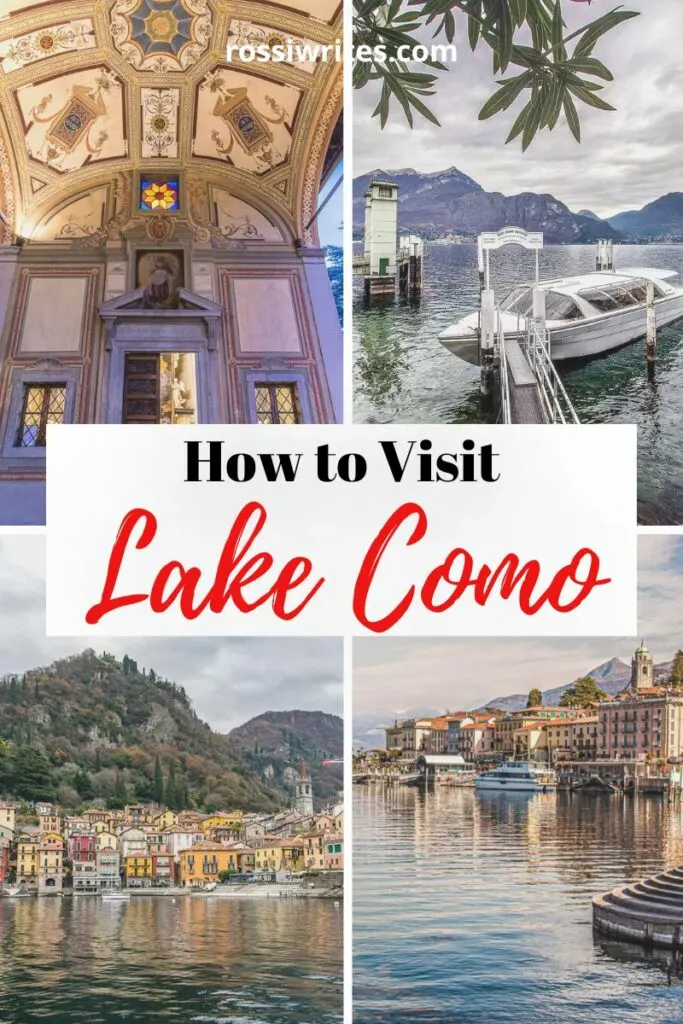
Where to Stay at Lake Como, Italy?
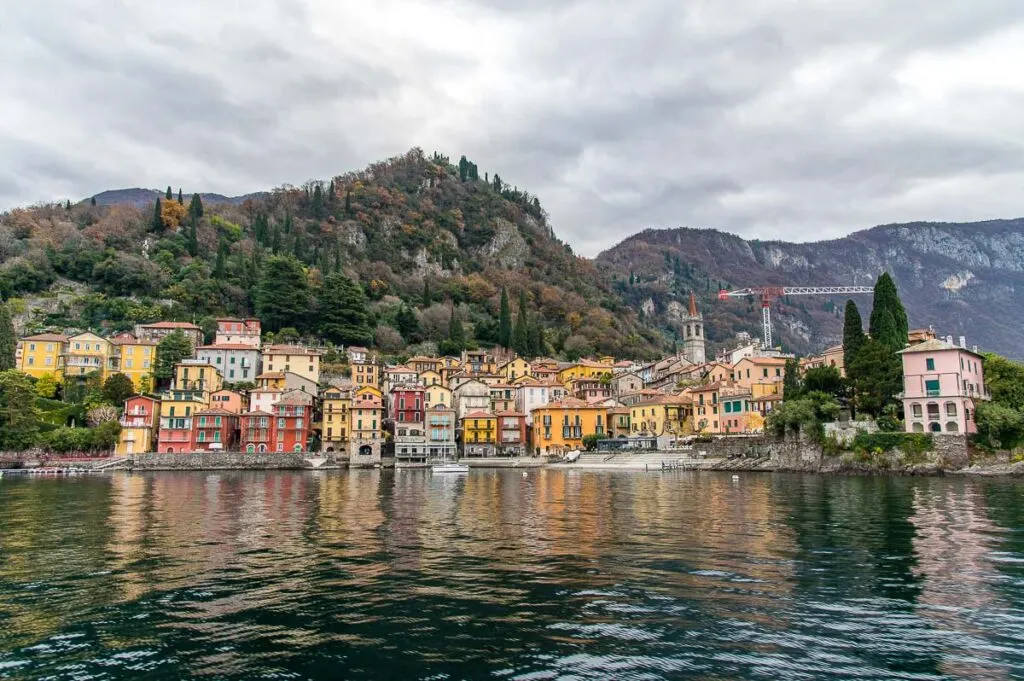
There is a huge selection of places to stay at Lake Como in any season.
You can choose from lavish historic villas that nowadays function as exclusive hotels. You can opt for a cosy B&B in the centre of a lakefront town. Or you may prefer a self-catering accommodation to enjoy a home-from-home experience.
If you are arriving by car, then make sure that your accommodation also offers parking spaces or can recommend a nearby car park. Especially, if you are planning to stay outside of the larger lakefront towns like Como and Lecco. Parking spaces in the smaller lake towns may be difficult to come across and are usually taken by the locals.
If you are relying on public transport and your accommodation doesn’t provide transfers, then make sure that you have easy access to the nearest bus stop or ferry port. You don’t want to have to walk for miles luggage in hand or depend on taxis every time you want to go to the town centre.
Here are some suggestions for places to stay at Lake Como. All come highly recommended:
Luxury: Grand Hotel Victoria concept & spa by R Collection Hotels, Grand Hotel Villa Serbelloni
Mid-Range: Casa sull’Albero, Hotel Lenno,
Budget: Locanda Alberti, Valle dei Mulini – Lake Como,
Alternatively, have a look at this map giving you a quick visual idea of the available accommodation options around Lake Como, Italy. You can zoom in and out, type in your specific travel dates, and then click on the different price points for detailed information about the hotel you are interested in:
Booking.comIn addition, have a look at this blog post which explains the different types of accommodation you can book in Italy. It will give you plenty of ideas to look into for the best and quirkiest places to experience here:
How Long to Spend at Lake Como?
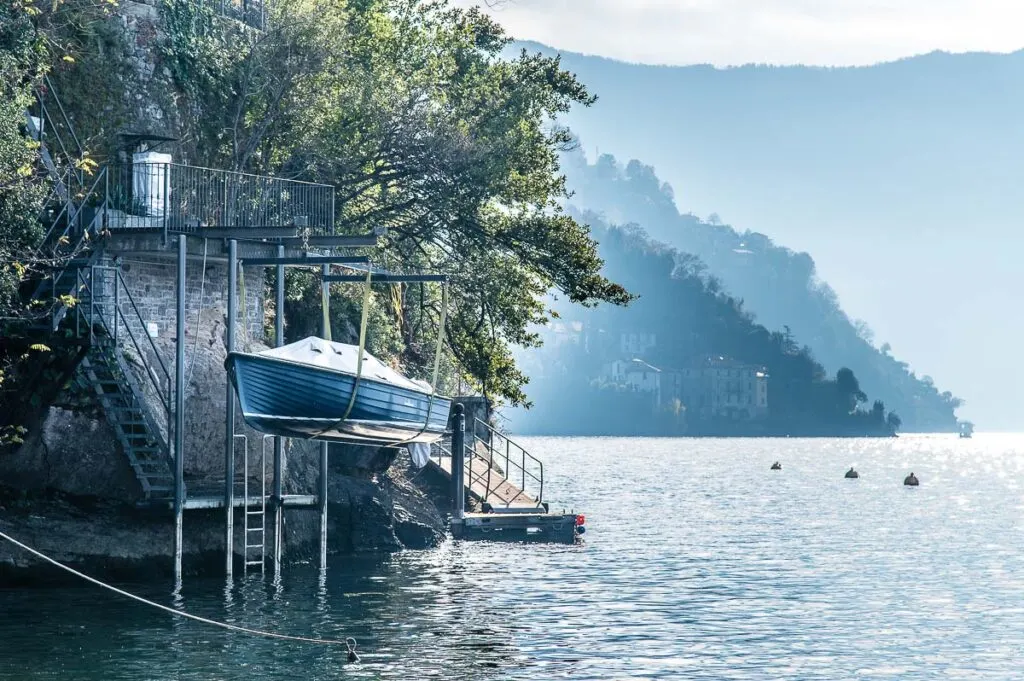
Lake Como has a lot to offer no matter your style of travel. You may be after a peaceful and relaxing holiday with stunning lake views, a pampering experience with spa procedures and some pool lounging, an active nature break with lots of hiking or an unforgettable day trip. Or you may just want to be able to say that you’ve been to Lake Como and understand what all the fuss is about. Any reason to visit is valid!
So, how long to spend here depends entirely on you and on the amount of time you have at your disposal.
Let’s say that this will be your first visit to the lake and you just want to test the waters. Then you can easily take a self-organised or guided day trip from Milan to Lake Como and see one or a few of the most popular lakefront towns like Como, Varenna, and Bellagio. You can also book a guided day trip around the lake taking you to some of its best sights (this one comes highly recommended).
Alternatively, you can pencil in a weekend break or an even longer stay at Lake Como. It’s a big place that easily caters to all types of travellers.
What to Pack for a Visit to Lake Como?
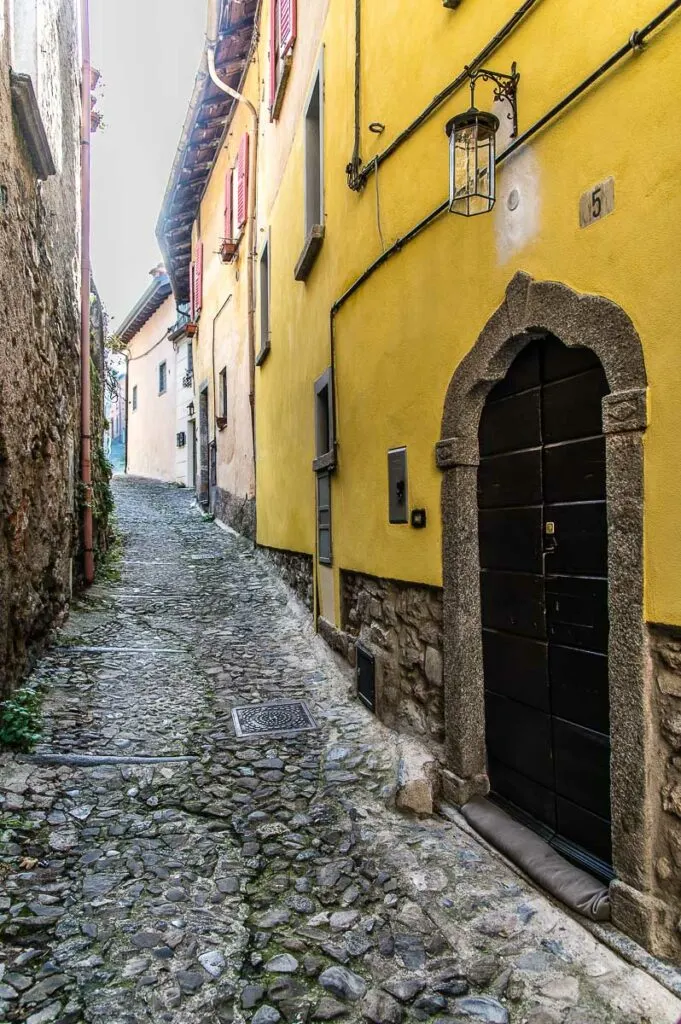
Lake Como has its own microclimate with moderate temperatures which vacillate around 26 degrees Celsius in summer and drop to around 4 to 8 degrees Celsius in winter. May and June are the wettest months in terms of rainfall and snow days in winter are very rare. Nights can get chilly in any season.
As such, no matter when you choose to visit, make sure that you pack plenty of layers. A light jacket or a cosy jersey may come in very handy during the high season. I am speaking as someone who got caught in a cold downpour in Varenna in July without a jacket because I had wanted to pack light and had assumed that summer is always warm in Italy. At the same time, don’t forget your sun cream, a hat/sunglasses, and a swimming costume.
In winter, you will want to be able to peel off a layer or two on one of those not-rare days when the sun shines bright at lunchtime and it feels like it’s spring already. At the same time, don’t forget your hat, scarf, and gloves as it feels so nice to be wrapped up warm in the evenings.
Bringing my padded hat with ear flaps (similar to this one) was my best packing decision during my last visit to Lake Como over ten days this past Christmas. It kept me really cosy during festive market explorations and hiking around.
Always pack a pair of good walking shoes for Lake Como. Plus, hiking shoes/boots are a must when you go exploring in nature. With many of the towns and villages around the lake having steep cobbled streets and often flights of steps instead of streets altogether, your ankles need to be well supported at all times.
Unless you are planning to visit just the towns of Como, Lecco, and Cernobbio (the central parts of which are flat), make sure that you bring an appropriate pair of shoes to allow you to safely navigate uneven surfaces and steep slopes.
Which Are the Best Towns to Visit on Lake Como?
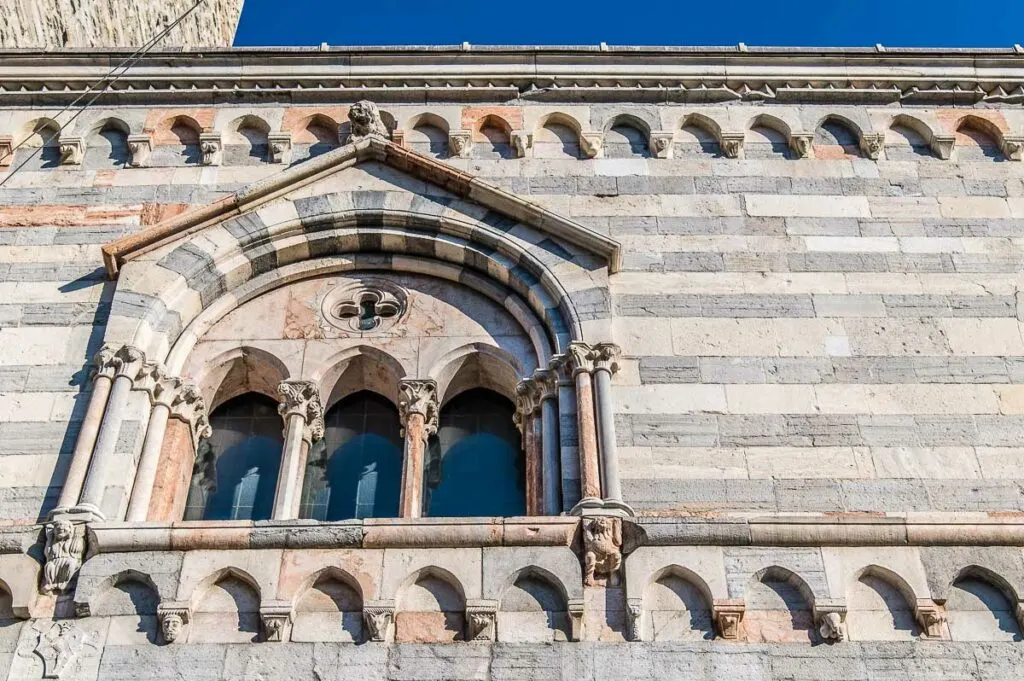
There are easily dozens of small towns and villages clustered along the waterline and clinging to the steep slopes above Lake Como. Some of them – like Bellagio – are famous worldwide. Others are much less known yet they have beautiful historic centres, a number of curious sights, and are linked to numerous hiking paths crisscrossing the lake’s lush natural setting.
Have a look at this blog post to pick the Lake Como towns that appeal the most to you based on your own interests and travel plans:
Otherwise, here is a shortlist of four of the most gorgeous towns on Lake Como to explore during your visit. All of them are easy to reach by train or by train/bus/ferry from Milan. This makes them great destinations for day trips and weekend breaks as well as for longer stays on Italy’s most famous lake.
Como – one of the largest towns on Lake Como. Come here for the imposing Duomo, the sights dedicated to Alessandro Volta (the inventor of the first electric battery), and the funicular taking you up a vertiginous slope to the town of Brunate. Regular trains link Como to Milan all throughout the day. Once in Como, you can also take a bus to nearby Cernobbio (another beautiful lakefront town) or a ferry up to Bellagio.
Bellagio – this is easily the most famous town on Lake Como. It stands on the tip of Punta Spartivento – the meeting point of the lake’s three branches. Bellagio is very picturesque and has a number of easy to see in a day sights – from the botanical garden of Villa Melzi to the cobbled streets of its historic centre populated by silk shops and craft workshops. You can reach Bellagio by bus or ferry from Como, by bus from Lecco, and by ferry from Varenna.
Varenna – the most charming town on Lake Como is a delight to explore. It has a cute little harbour, a waterfront promenade with far-reaching lake views, medieval castle, and next door to it stands the magnificent Villa Monastero with its delightful garden. Regular trains connect Varenna to Milan all throughout the day. Ferries link this lakefront town to the towns of Menaggio and Bellagio, too, so that you can see them all in a day.
Bellano – this is Lake Como’s hidden gem of a town. With a beautiful promenade, a cute harbour, and a dramatic gorge cut through over millions of years by a powerful waterfall, Bellano has a lot to offer. Yet, you can easily see it all in a few hours or over a very leisurely day. Even better! Bellano is on the same train line as Varenna, making it possible to visit both towns as part of the same trip.
What Are the Best Things to Do at Lake Como?
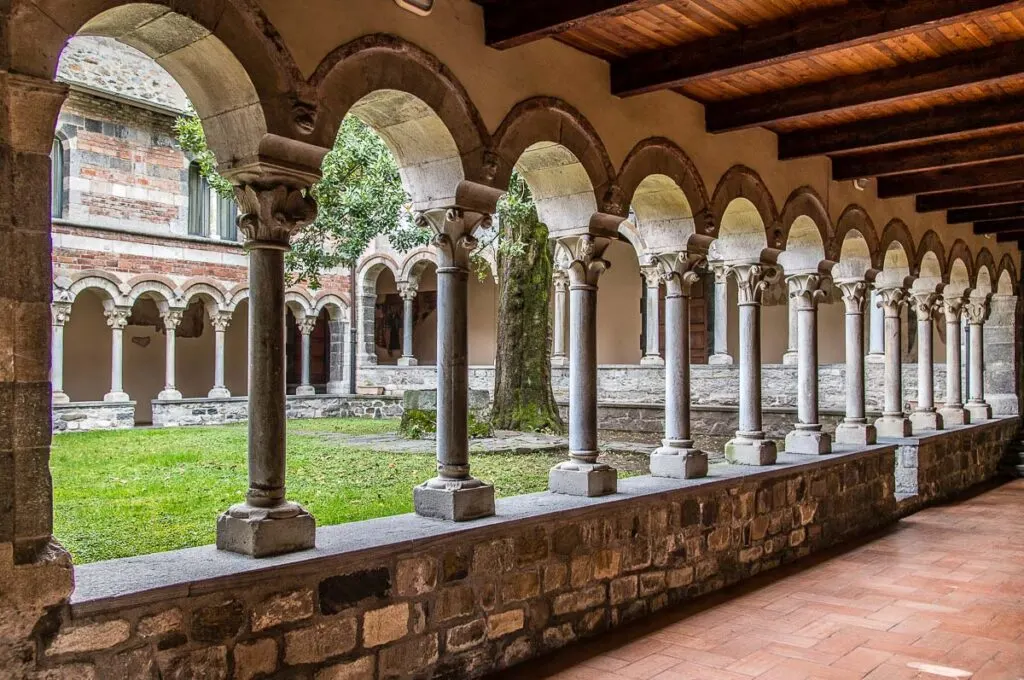
There are many things to do and enjoy around Italy’s most famous lake – Lago di Como. For an extensive list, have a look at this comprehensive travel guide:
Otherwise, here is a shortlist:
Sightseeing – the shores of the lake are studded with historic villas, centuries-old churches, and excellent museums. The most well-known are the Duomo, the Volta Temple, the Civic Art Gallery, and the Silk Museum in Como, Villa Balbaniello near Lenno, Villa Monastero next door to Varenna, Villa Melzi in Bellagio, the Moto Guzzi Motorcycle Museum in Mandello del Lario, and so many others.
Hiking and Nature Exploring – it is so very easy to get close to nature around Lake Como. Hiking paths (some of which follow ancient Roman roads) crisscross the steep slopes and link the small towns and villages here. Powerful waterfalls crash through tall canyons and flow into the lake. Don’t miss Orrido di Nesso and Orrido di Bellano. You don’t even need to break a sweat to get out and about in nature here. A number of funiculars offer the chance to enjoy sprawling lake views from the comfort of a smoothly ascending cabin.
Shopping – Lake Como is a great place to indulge in some shopping no matter if you are after the latest fashions of the best Italian brands or artisan items by local craftsmen. The area is also famous for its locally designed silk accessories. Silk has been produced around the lake for centuries and nowadays you can get beautiful silk bags, scarves, and ties for yourself and your loved ones. Don’t miss the local brand Acqua del Lario which makes perfumes, candles, and home scents inspired by the towns and vistas of Lake Como.
Where to Find More Information About Lake Como and the Region of Lombardy?
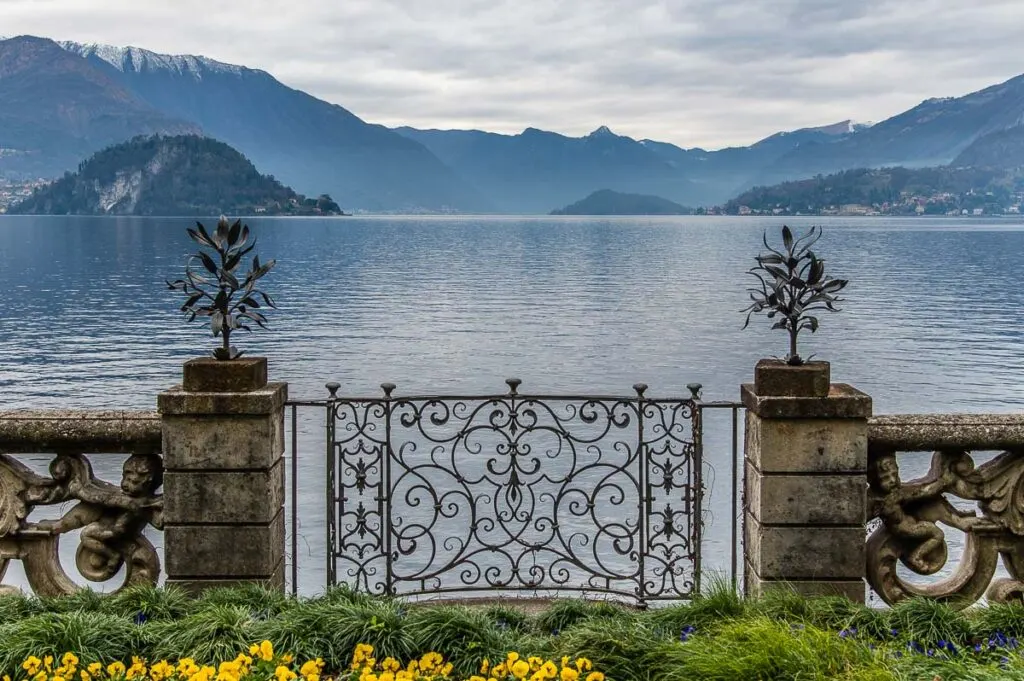
If you are considering a trip to Lake Como in particular and the Northern Italian region of Lombardy in general, you may want to also have a look at the following categories and posts on my blog:
- Lake Como – a full list of all my blog posts about Italy’s most famous lake
- Lombardy – a full list of all my blog posts about this must-see region in Italy
- Lake Como – The Beauty of Italy’s Most Famous Lake in 25 Photos
- 25 Best Things to Do in Lake Como, Italy (With Maps, Travel Info, and Practical Tips)
- Lake Como in Winter – 10 Reasons to Visit Italy’s Most Famous Lake in the Off-Season
- 10 Reasons to Visit the Region of Lombardy in Italy
- 15 Must-See Cities and Towns in Lombardy, Italy
They are based on my first-hand experience of visiting these destinations in Italy and provide lots of practical information to help you plan your travels.
In addition, for the most up-to-date information about events and local sights, keep an eye on the official websites of Milan, the Region of Lombardy, and the major towns on Lake Como, for example, Como, Bellagio, Varenna, Lecco, and so on.
Finally, if you want to invest in a good guidebook, this one covers Lombardy, Milan, and the Italian lakes which makes it very handy to carry around with you during your travels.
Where to Find More Information About Visiting Italy?
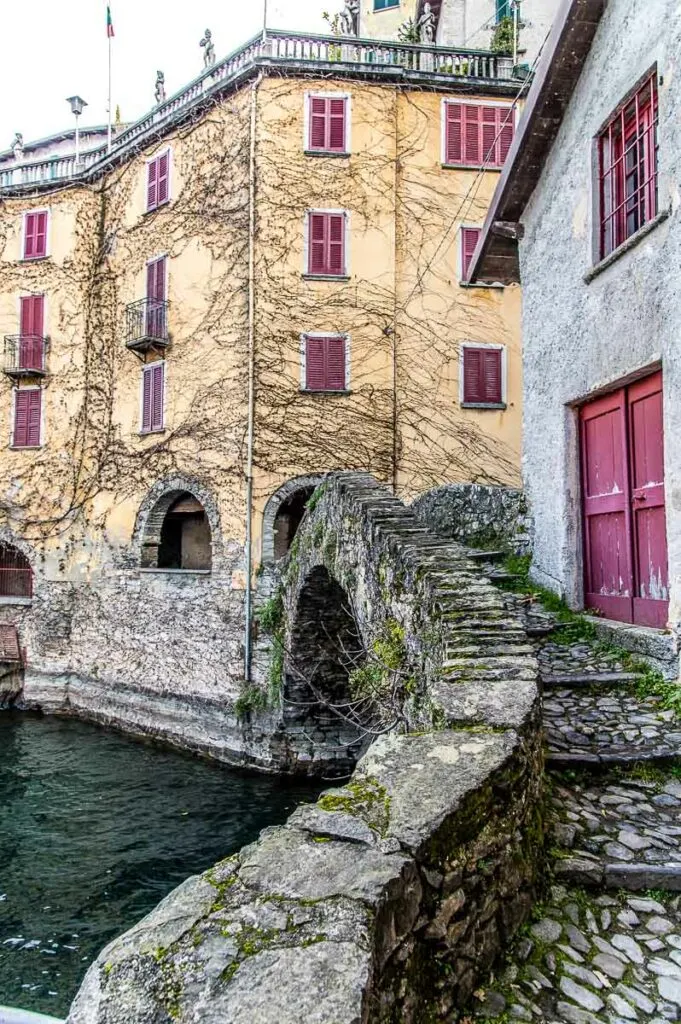
I have been blogging about travelling to and within Italy for eight years now providing detailed and first-hand tried and tested information about the best things to do in this beautiful country. It’s all based on my close to twenty years of visiting Italy solo and with my family. Six of these years, we actually spent living in Vicenza in the north of the country.
If you are after in-depth researched and illustrated with dozens of pertinent photos articles about Italy, have a look at the following categories and blog posts:
- Italy – a full list of all my blog posts about Italy
- 10 Reasons to Visit Northern Italy
- Veneto, Trentino, Emilia Romagna – full lists of all my blog posts about these Italian regions
- Venice, Padua, Lake Garda, Milan – full lists of all my blog posts about these must-see destinations in Italy.
In addition, right at the end of this blog post, you will find a list with links to some of my most popular blog posts about many beautiful and exciting cities, towns, and regions to visit in Italy. So, just scroll down and then click on the ones you are interested in.
Finally, Italy’s official tourism website is a great source of the latest news about travel in Italy. Otherwise, this is one of the best guidebooks about Italy.
In Conclusion
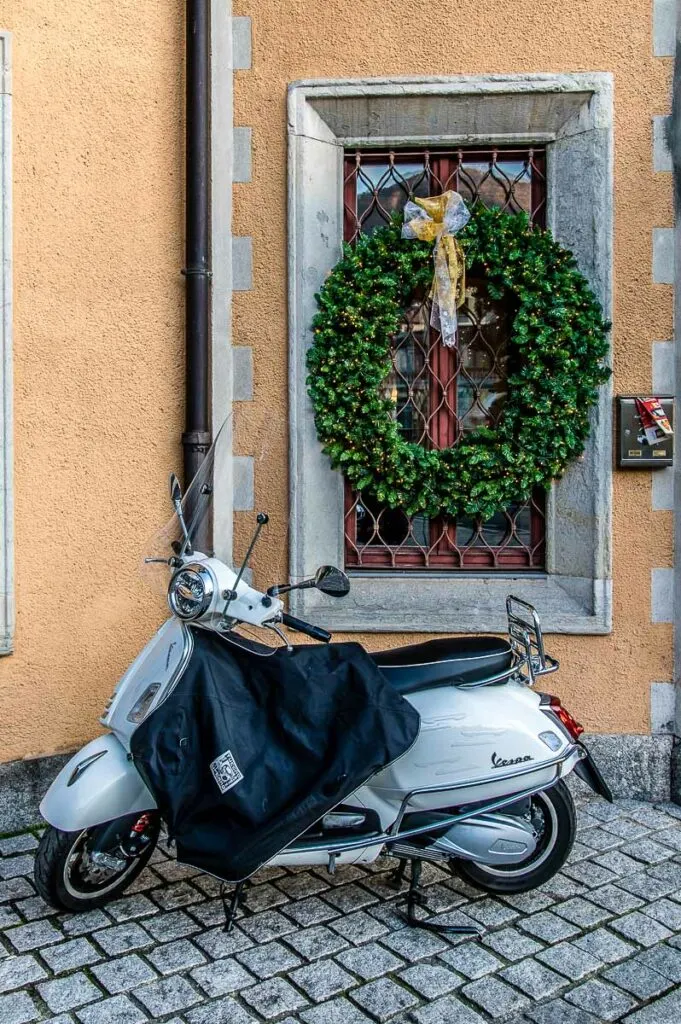
Lago di Como is a must-see destination in Northern Italy. The lake is internationally famous for its beautiful natural setting, long list of historic sights, and strings of charming lakefront towns and villages. It’s not in vain that for decades it has been a favourite place to relax for famous people from the worlds of acting, fashion, music, and even politics.
If Lake Como is on your bucket list and you are starting to look into a possible visit to it, this blog post will help streamline your Italy travel planning. It explores in detail the nine best ways to get to Lake Como and navigate around it. From road and railway to air and your own two feet, all available modes of transportation are covered.
It’s all based on my own first-hand experiences of visiting and travelling around Lake Como over the last five years. To help you even further, I have also condensed a section with practical tips about the best places to stay at the lake, the best towns to visit here, and the best things to do during your visit.
I hope that all this information will come in handy and that will allow you to get the most out of your time at Italy’s most famous lake.
Enjoy Lake Como!
Travel Tools
Now, Get Ready Quick for Your Trip to Lake Como in Italy
Get a guidebook from Amazon.
Buy plane tickets, train tickets, and bus tickets through Omio.
Rent a car from Europcar.
Research accommodation on Booking.com.
Select local tours and activities on GetYourGuide, Viator, and Tiquets.
More Helpful Italy Info for You
Best of Italy: Italian Piazzas, Italian Markets, Accommodation for Every Budget, Best Times to Visit Italy, Italy in Summer, Italy with Kids
Italian Food: Best Italian Food Gifts, Cheap Italian Food, Rules of Italian Breakfast, Italian Breakfast Foods
Italian Coffee: Italian Coffee Culture, Italian Coffee Drinks, History of Coffee in Italy
Christmas in Italy: Fun Facts, Things to Do, Italian Nativity Scenes, Panettone, Christmas Guide
Northern Italy: Best Cities to Visit, Major Airports, Reasons to Visit
Lake Como: Best Things, to Do, Reasons to Visit in Winter, Inspiring Photos, Best Airports, Nesso
Lake Garda Towns and Villages: Best Towns, Desenzano del Garda, Riva del Garda, Malcesine, Torri del Benaco, Punta di San Vigilio, Campo di Brenzone, Borghetto and Valeggio sul Mincio
Visiting Lake Garda: Map of Lake Garda, Getting Around Lake Garda, Lake Garda with Kids, 8 Best Airports, Venice to Lake Garda, Verona to Lake Garda, Milan to Lake Garda, Bologna to Lake Garda
Verona: Things to Do in One Day, Verona Opera Festival, Day Trips from Verona, Romeo and Juliet Itinerary, Verona to Venice, Verona to Milan
Padua: Things to Do in One Day, 101 Facts About Padua, 10 Reasons to Visit Padua, Day Trips from Padua
Vicenza: Things to Do, Day Trips from Vicenza, Best Museums, The Beauty of Vicenza
Veneto: Top Places to Visit, Unique Adventures, Most Colourful Places, Mysterious Places, Most Beautiful Lakes, Reasons to Visit, Main Cities, Prettiest Small Towns, Most Beautiful Villages
Lombardy: Best Cities and Towns, Reasons to Visit, Brescia
Friuli Venezia Giulia: Venzone, Most Beautiful Villages
Emilia Romagna: Bologna, Ravenna, Comacchio, Most Beautiful Villages
Marche: Reasons to Visit, Gradara, Frasassi Caves, Temple of Valadier
Umbria: Reasons to Visit Perugia
Thank you for reading! Please, leave me a comment, pin the images or use the buttons right at the top and at the end of this blog post to share it on social media.
For more useful information like this, please, like my blog’s page on Facebook and Instagram and subscribe to my strictly no-spam newsletter.
Pin This Blog Post!
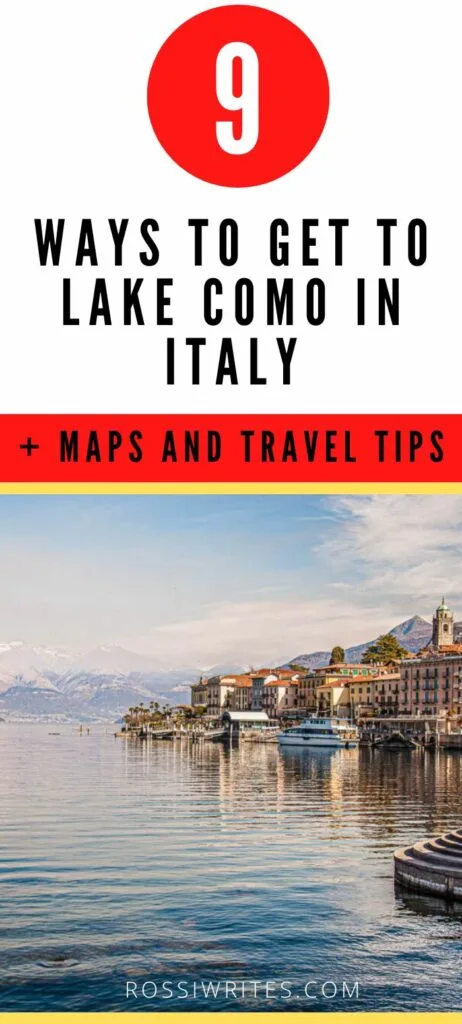
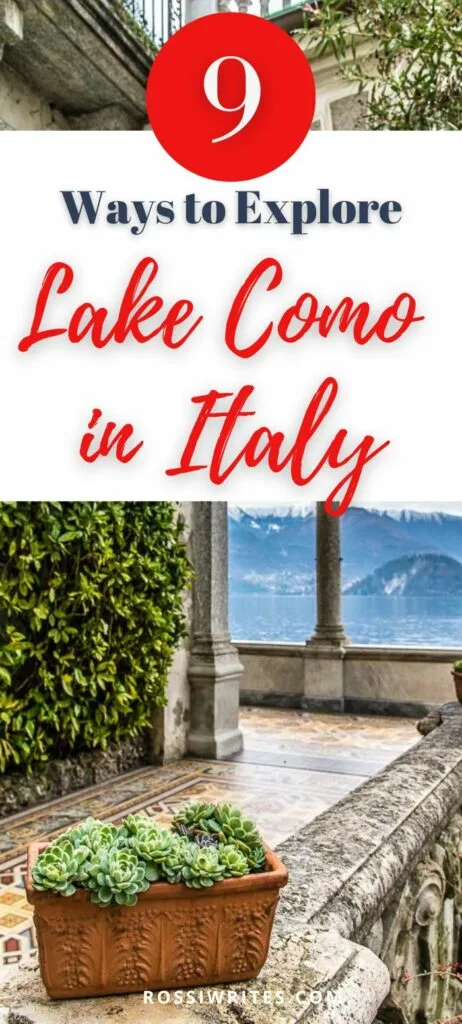

Melissa Glorioso
Sunday 15th of January 2023
I wish you had included how to get to Lake Como from Venice! I do not know why, but I thought I had read an article you had written a couple of years ago about it. I suppose I am mistaken. I used lots or your information when I went to Lake Garda 2 years ago from Venice. I will be in Venice 6 weeks and have rented a house on Lake Como for a week this coming May. Please give me a heads up if you did do a story about getting to Como from Venice before, and I just cannot find it! Thank you so much..I have been following you for a few years now and your writings about Italy. So very helpful!
admin
Monday 16th of January 2023
Thank you for your kind words, Melissa! I hope you have a wonderful time in Italy this coming May. I don't as of yet have a separate article about getting to Lake Como from Venice. At present, I have such an article for Lake Garda. In any case, it's not difficult to get to Lake Como from Venice. You can travel by train or by car. If you travel by train, you can get either the direct high-speed train from Venice to Milan or the fast regional train from Venice to Verona and then change to the regional train to Milan. (It's all explained in some detail in this blog post.) The train station you'll need in Milan is called Milano Centrale. Once at Milano Centrale, you can get the train to Lake Como as explained under point 2 in this blog post above. Just pick the train station that is nearest to your accommodation on the lake. The map shows the train stations around the lake. Once at the lake, if need be, you can continue by local bus or ferry (as covered above). If you travel by car, your GPS will calculate the best route and the tips under point 1 above, hopefully, will come in very handy. I hope this helps!
Best wishes,
Rossi :)